Design and Implementation of a Low-Voltage Photovoltaic System Integrated with Battery Energy Storage
Abstract
:1. Introduction
2. Series Partial Power Converter
- V1: input voltage
- I1: input current
- η: theoretical transfer efficiency
- V1: input voltage
- V2: output voltage
- I1: input current
- η: transfer efficiency
3. Modeling and Simulation Analysis of Converter
3.1. Switch Averaging Modeling
3.2. Simulation Based Numerical Frequency Domain Model Analysis
3.2.1. AC Sweep at Output of Cûk Circuit
3.2.2. AC Sweep at Output of the Isolated Cûk Circuit
3.2.3. AC Sweep at Output of the SPPC
3.2.4. AC Sweep at Input of SPPC
3.3. System Control
4. Experimental Verification of the Low-Voltage Photovoltaic Storage System
4.1. Experimental Verification of the Power Transmission Efficiency in a Laboratory Environment
4.2. Experiment of the Power Transmission under Natural Working Conditions
4.2.1. Photovoltaic Output Power Sweeping Test
4.2.2. Photovoltaic Maximum Power Tracking Experimental Verification
4.2.3. Start-Up Experiment of the PV Storage System
4.2.4. Photovoltaic Full Cover and Tracking Experiment
5. Conclusions
Author Contributions
Funding
Data Availability Statement
Conflicts of Interest
References
- Chi, C.-J. Analysis of Energy Technology Development Strategy in Shanghai. In Proceedings of the 2006 International Conference on Management Science and Engineering, Lille, France, 5–7 October 2006; pp. 1831–1835. [Google Scholar]
- Amrouche, S.O.; Rekioua, D.; Rekioua, T.; Bacha, S. Overview of energy storage in renewable energy systems. In Proceedings of the 2015 3rd International Renewable and Sustainable Energy Conference (IRSEC), Marrakech, Morocco, 10–13 December 2015; pp. 1–6. [Google Scholar]
- Carrasco, J.M. Power electronics for the integration of renewable energies into smart grids. In Proceedings of the 2011 International Conference on Power Engineering, Energy and Electrical Drives, Malaga, Spain, 11–13 May 2011; p. 1. [Google Scholar]
- Lucchese, F.C.; Canha, L.N.; Brignol, W.S.; Hammerschmitt, B.K.; Da Silva, L.N.F.; Martins, C.C. Energy Storage Systems Role in Supporting Renewable Resources: Global Overview. In Proceedings of the 2019 54th International Universities Power Engineering Conference (UPEC), Bucharest, Romania, 3–6 September 2019; pp. 1–6. [Google Scholar] [CrossRef]
- Ogunniyi, E.O.; Pienaar, H. Overview of battery energy storage system advancement for renewable (photovoltaic) energy applications. In Proceedings of the 2017 International Conference on the Domestic Use of Energy (DUE), Cape Town, South Africa, 4–5 April 2017; pp. 233–239. [Google Scholar]
- Gebreslassie, B.; Kelam, A.; Zayegh, A. Energy saving, in commercial building by improving photovoltaic cell efficiency. In Proceedings of the 2017 Australasian Universities Power Engineering Conference (AUPEC), Melbourne, Australia, 19–22 November 2017; pp. 1–6. [Google Scholar]
- Wang, J.; Yang, C.; Liu, F.; Meng, X.; Wang, J.; Liu, J. The development and utilization of new clean energy. In Proceedings of the 2016 IEEE International Conference on Power and Renewable Energy (ICPRE), Shanghai, China, 21–23 October 2016; pp. 639–643. [Google Scholar]
- Al-Soeidat, M.R.; Aljarajreh, H.; Khawaldeh, H.; Lu, D.D.-C.; Zhu, J. Three-Port DC–DC Converter for Integrated PV-Battery System. IEEE J. Emerg. Sel. Top. Power Electron. 2020, 8, 3423–3433. [Google Scholar] [CrossRef]
- Lakshmi, J.J.; Shankar, N.; Maheswari, K.; Manivannan, S. Improved Bidirectional Converter for PV System with Battery Storage. In Proceedings of the 2019 International Conference on Advances in Computing and Communication Engineering (ICACCE), Sathyamangalam, India, 4–6 April 2019; pp. 1–4. [Google Scholar]
- Nedyalkov, I.; Arnaudov, D.; Hinov, N.; Kanchev, H. Modelling of an off-grid photovoltaic power supplying system for telecommunication equipment. In Proceedings of the 2017 15th International Conference on Electrical Machines, Drives and Power Systems (ELMA), Sofia, Bulgaria, 1–3 June 2017; pp. 64–69. [Google Scholar]
- Matsuo, H.; Lin, W.; Kurokawa, F.; Shigemizu, T.; Watanabe, N. Characteristics of the multiple-input DC-DC converter. IEEE Trans. Ind. Electron. 2004, 51, 625–631. [Google Scholar] [CrossRef]
- Bhunia, M.; Gupta, R.; Subudhi, B. Cascaded DC-DC converter for a reliable standalone PV fed DC load. In Proceedings of the 2014 IEEE 6th India International Conference on Power Electronics (IICPE), Kurukshetra, India, 8–10 December 2014; pp. 1–6. [Google Scholar]
- Simes, M.G.; Farret, F.A. POWER ELECTRONICS. In IEEE Modeling Power Electronics and Interfacing Energy Conversion Systems; Wiley-IEEE Press: Piscataway, NJ, USA, 2017; pp. 61–81. [Google Scholar]
- Suntio, T.; Kuperman, A. Comments on “An Efficient Partial Power Processing DC/DC Converter for Distributed PV Architectures”. IEEE Trans. Power Electron. 2015, 30, 2372. [Google Scholar] [CrossRef]
- Zientarski, J.R.R.; Martins, M.L.D.S.; Pinheiro, J.R.; Hey, H.L. Evaluation of Power Processing in Series-Connected Partial-Power Converters. IEEE J. Emerg. Sel. Top. Power Electron. 2019, 7, 343–352. [Google Scholar] [CrossRef]

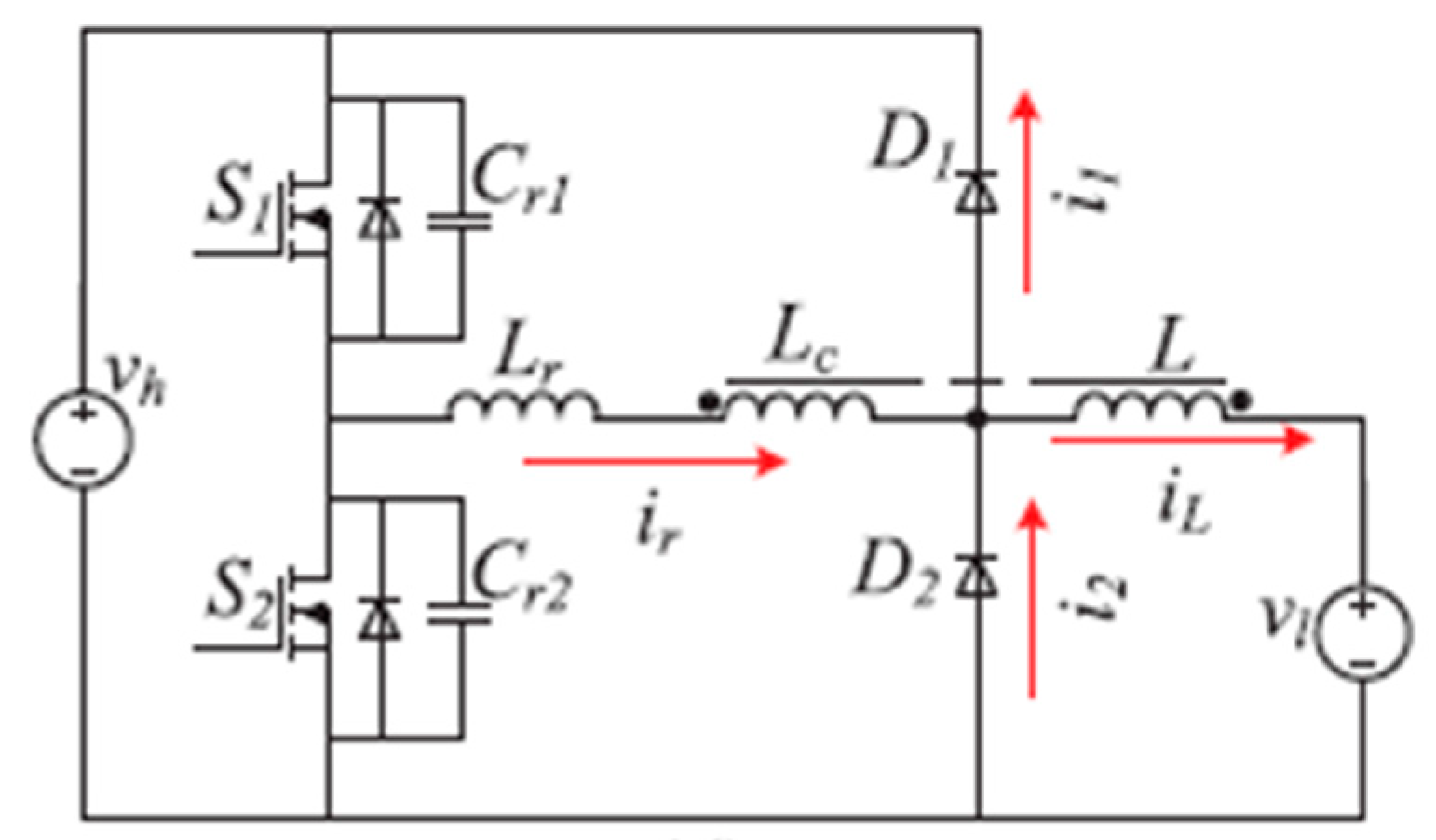
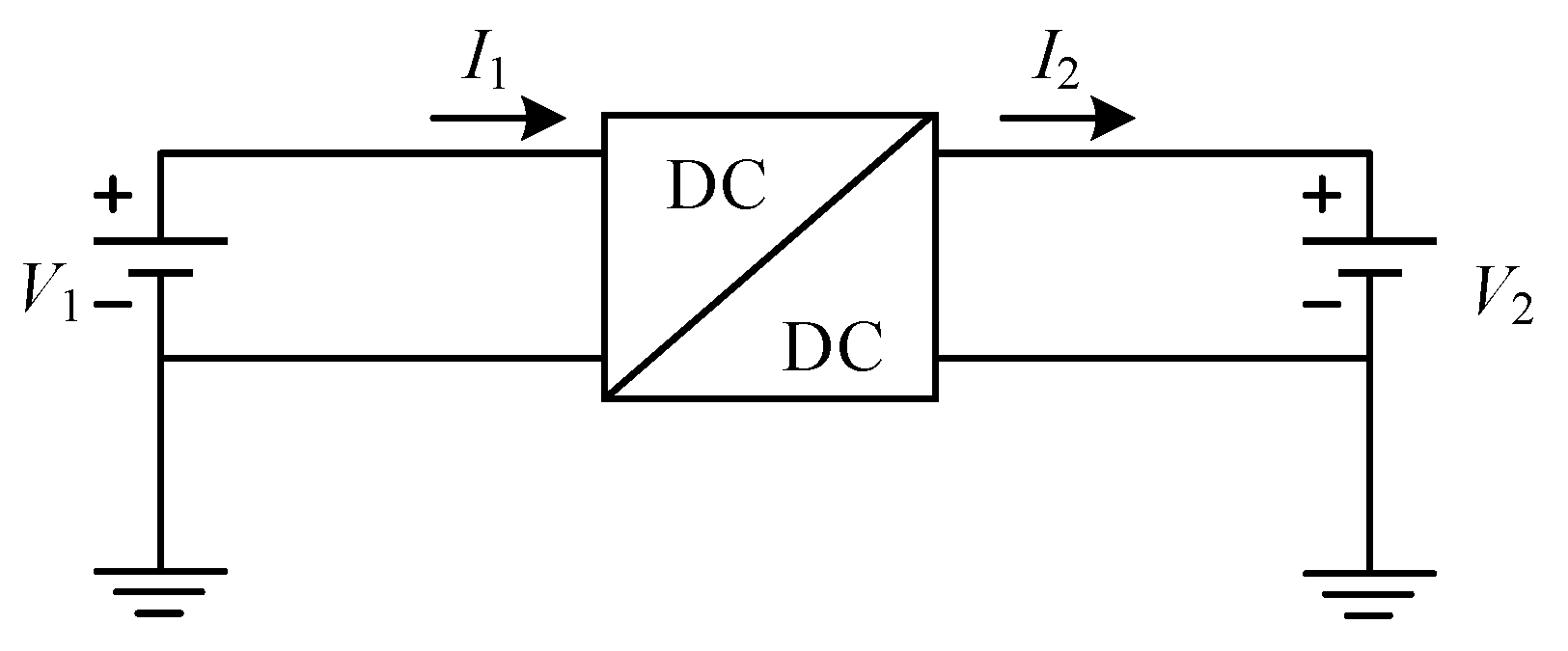
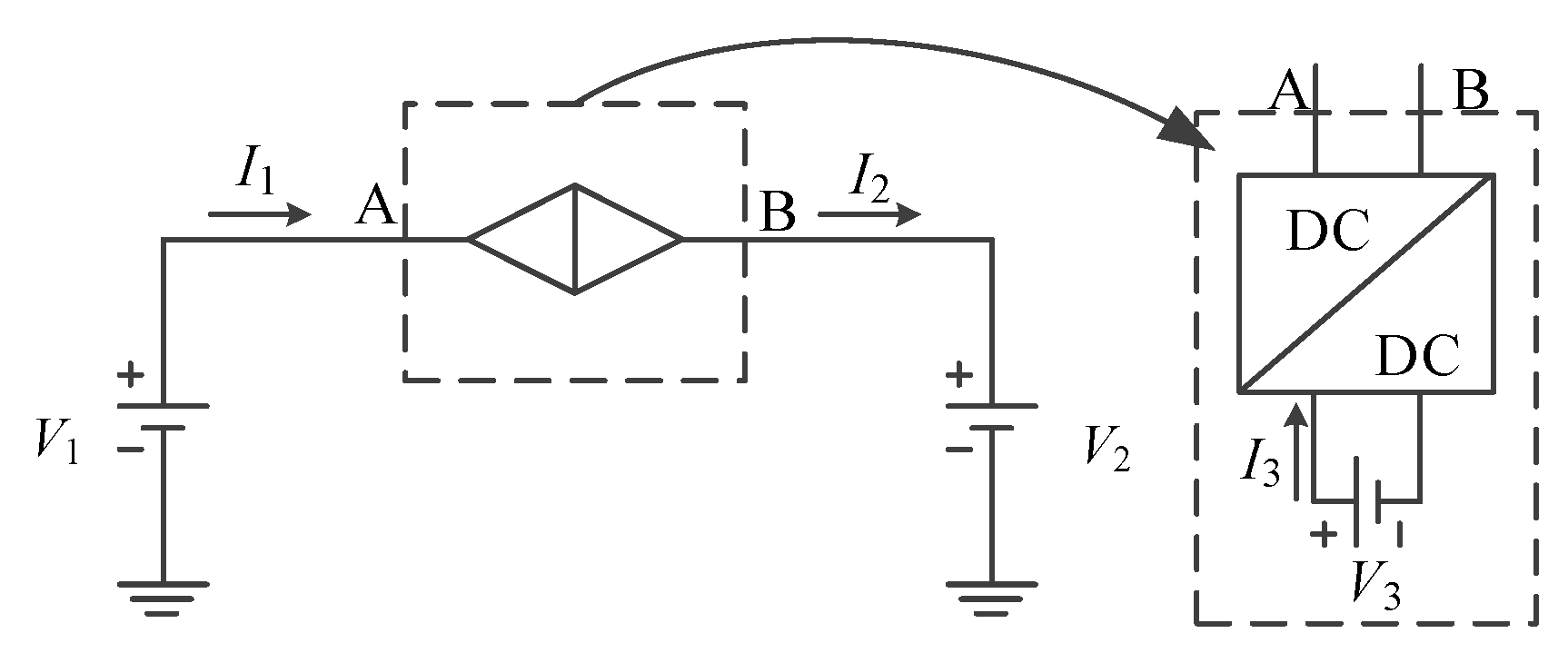



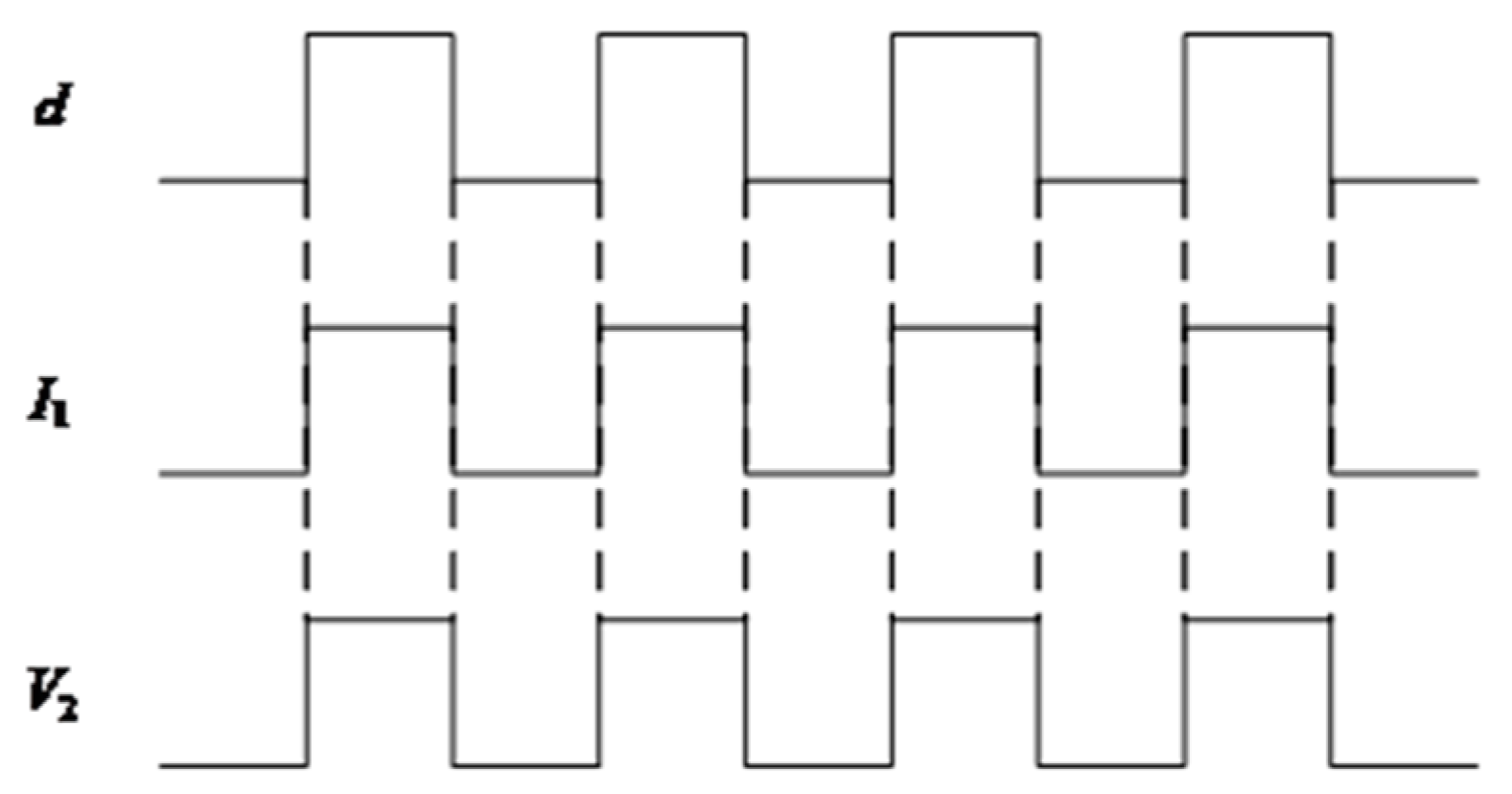
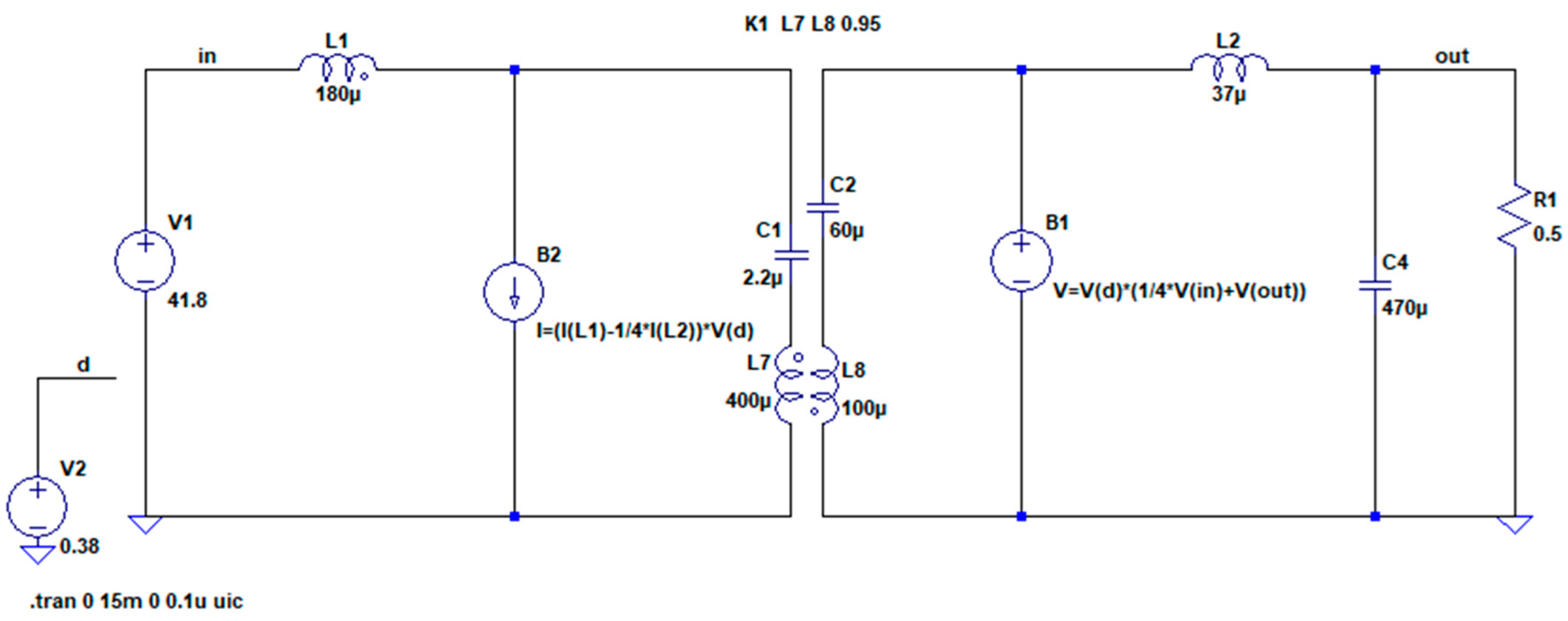
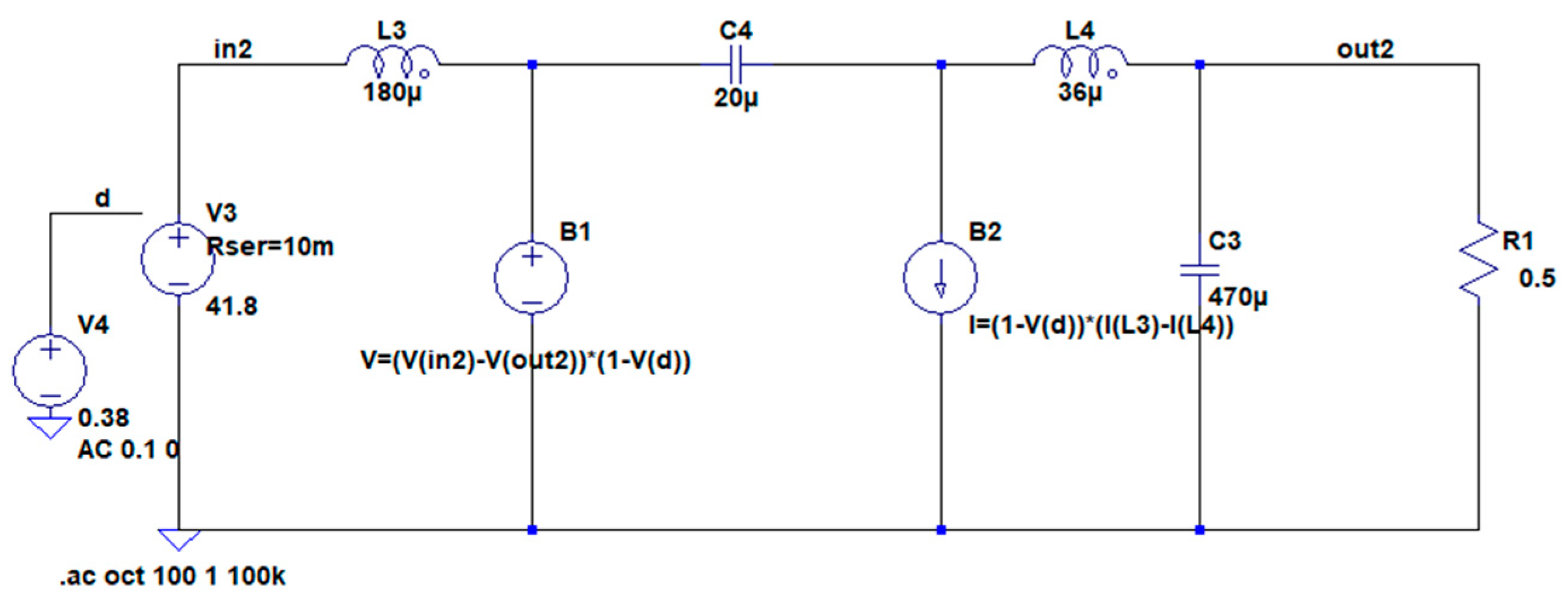
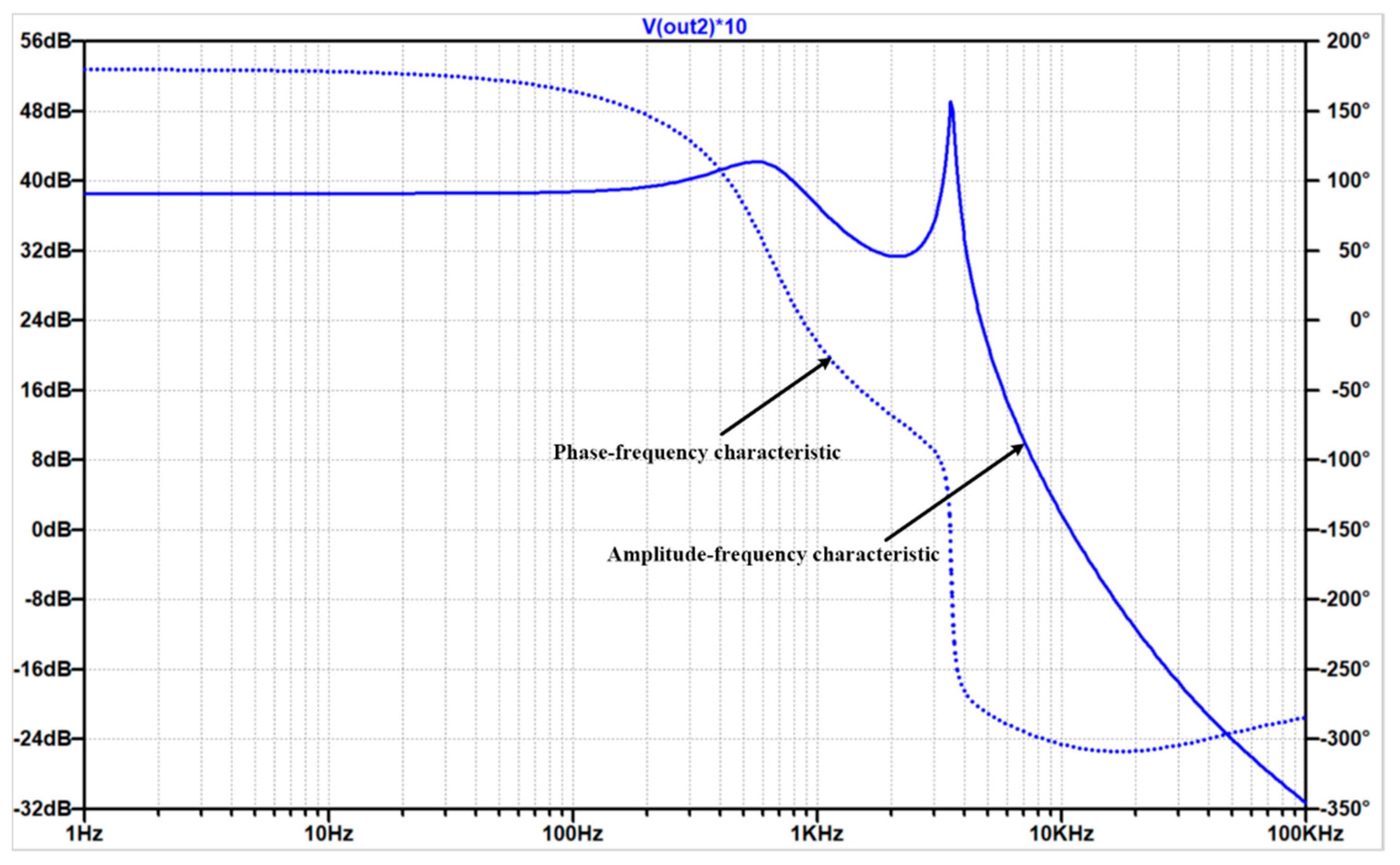

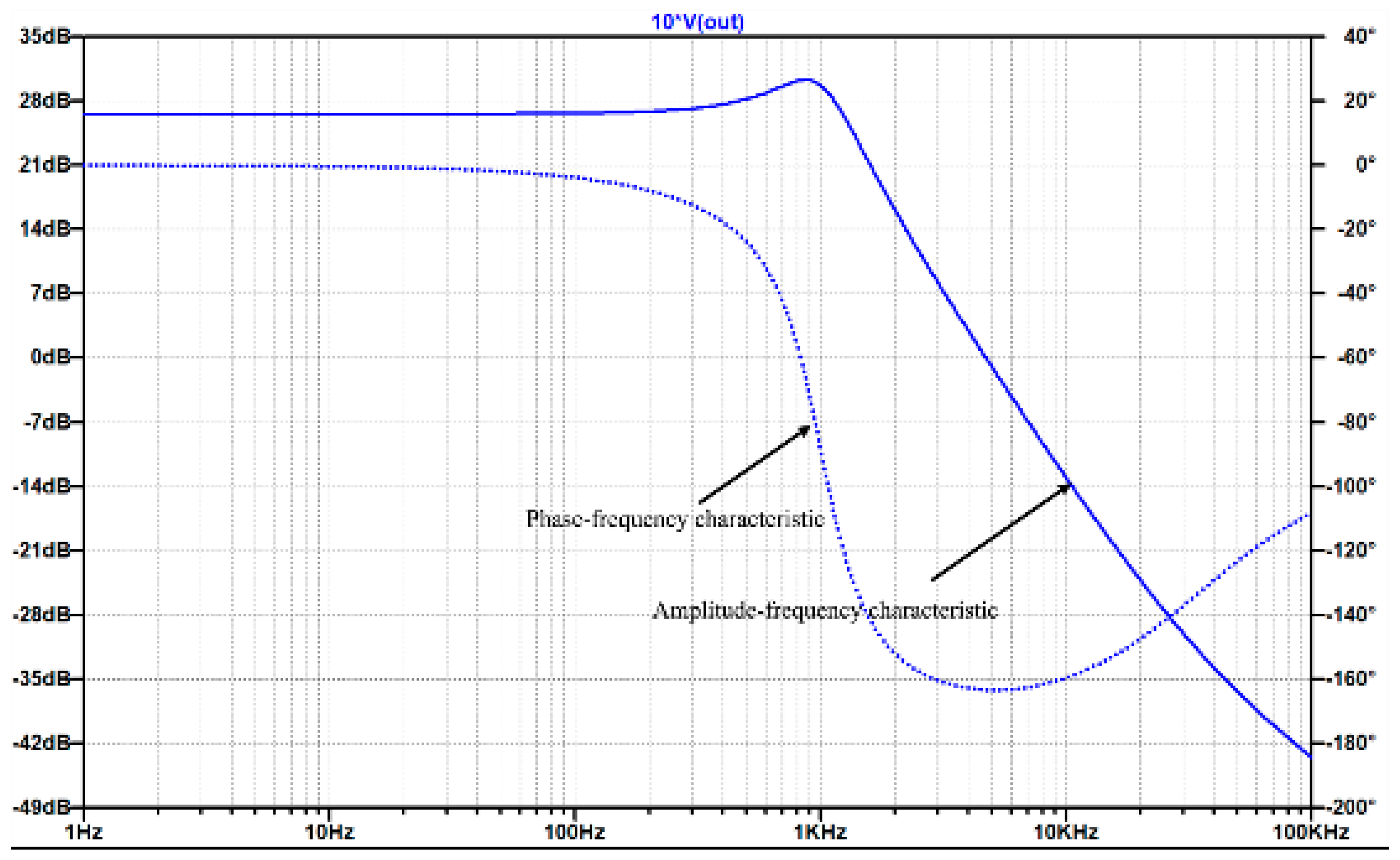
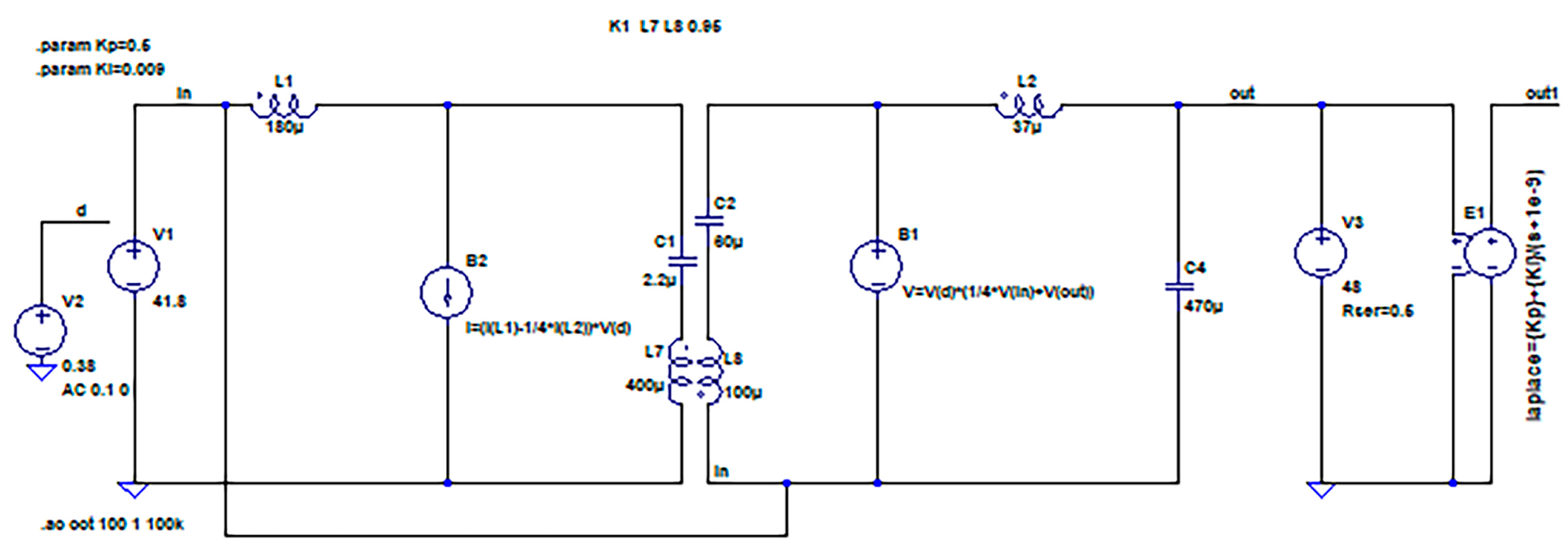
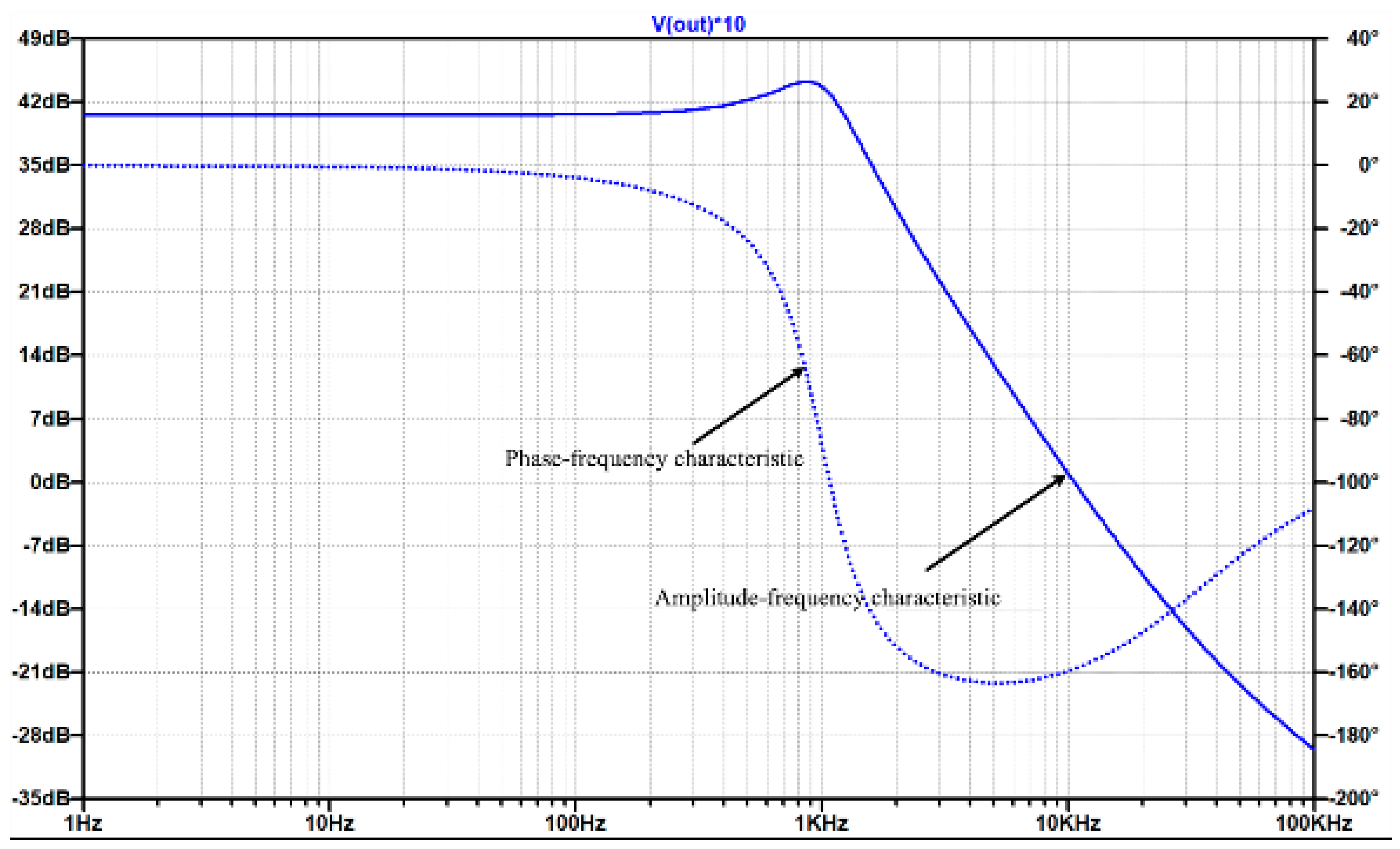

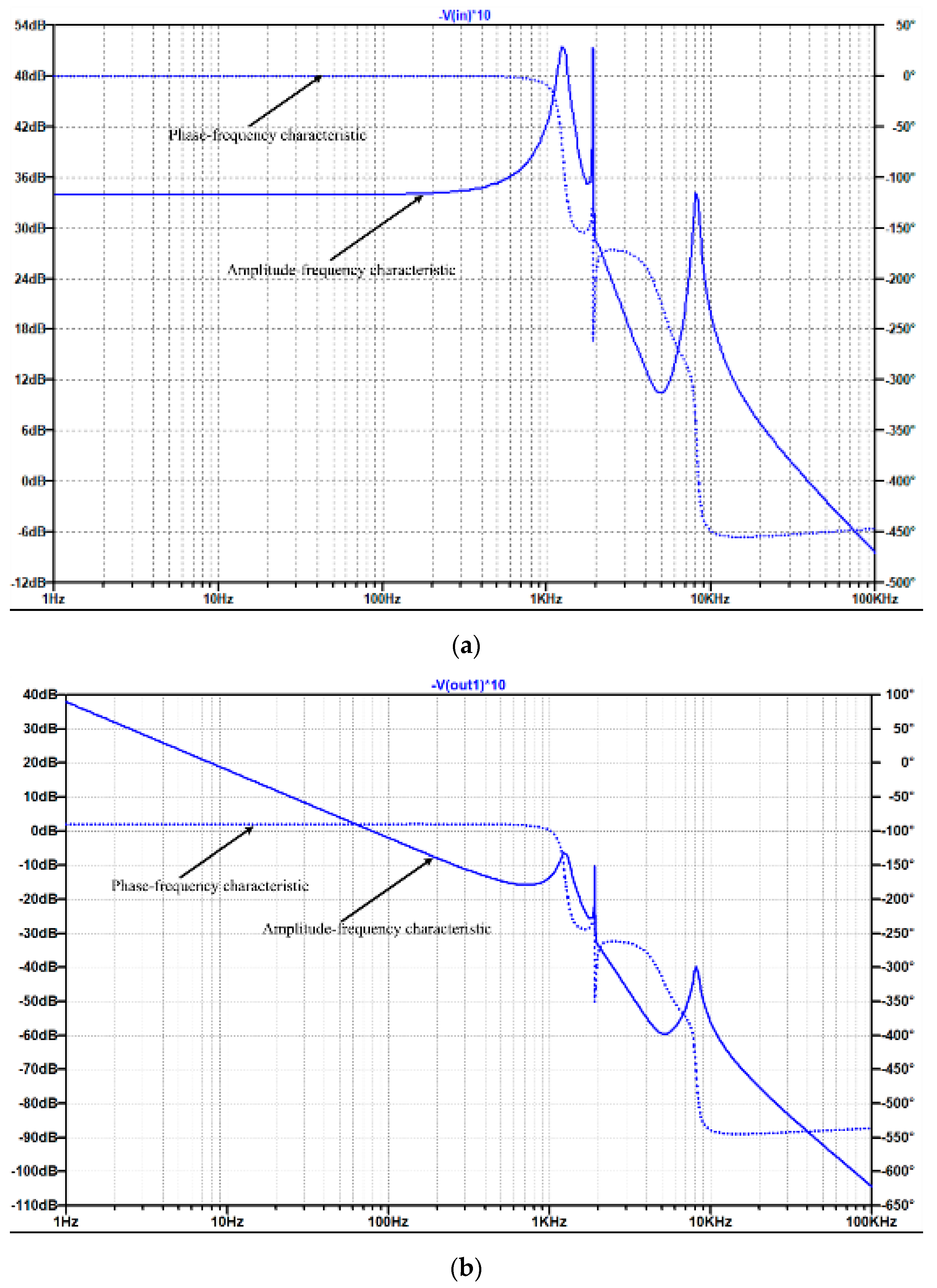
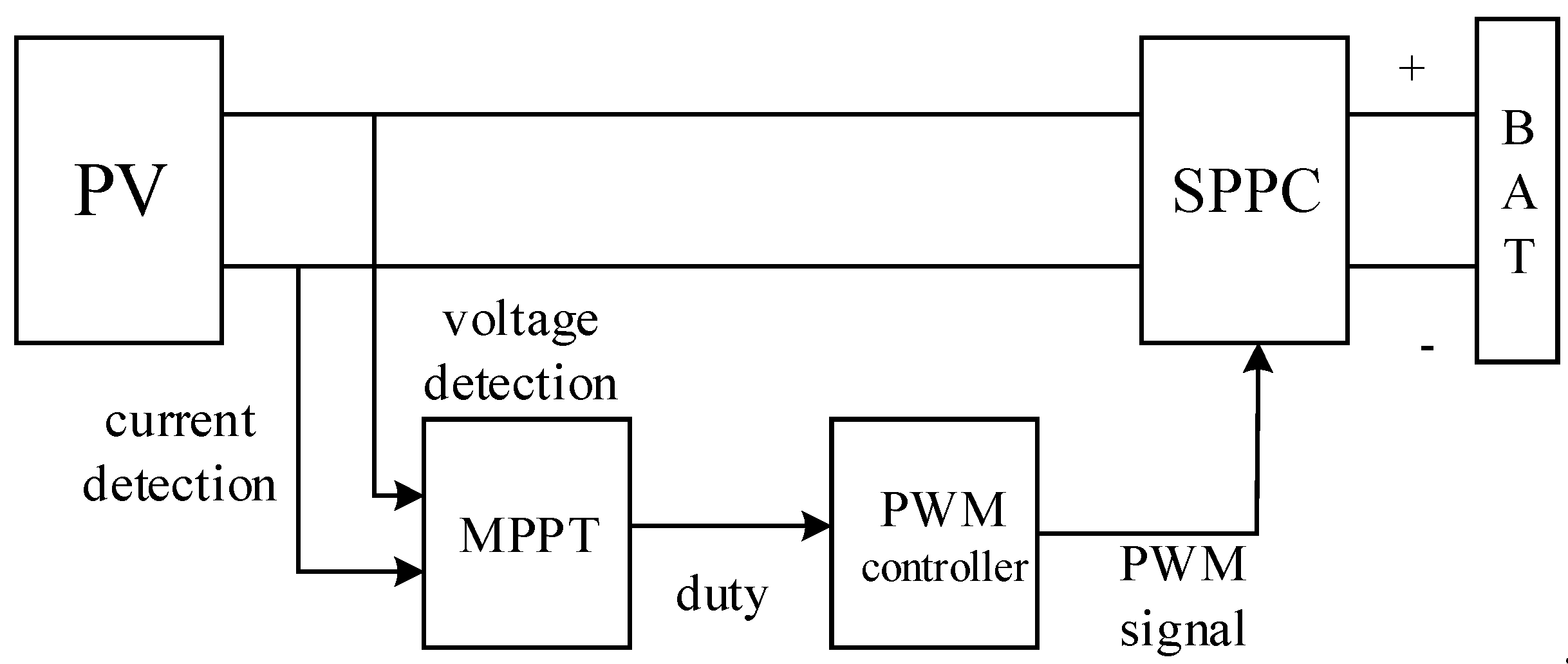
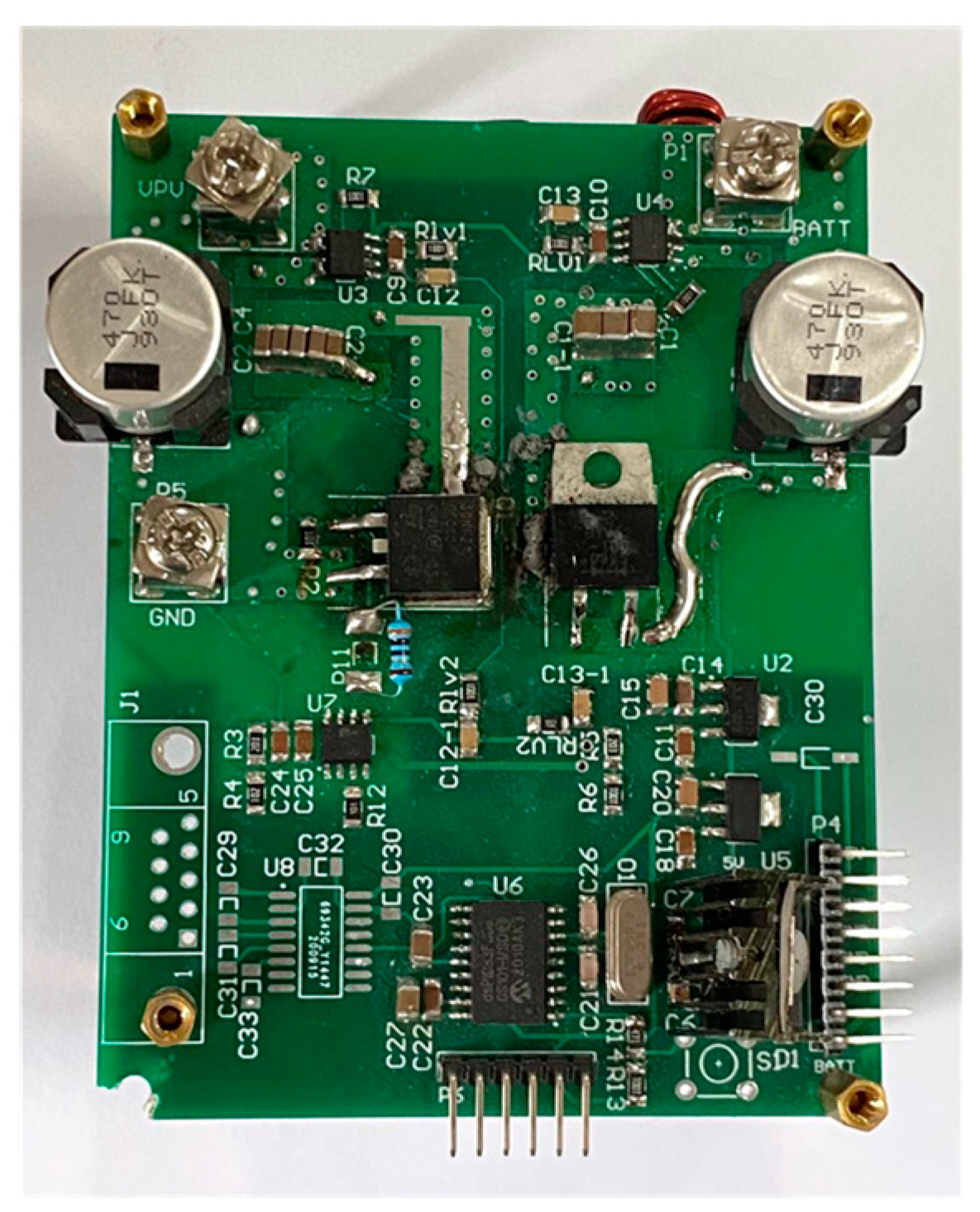
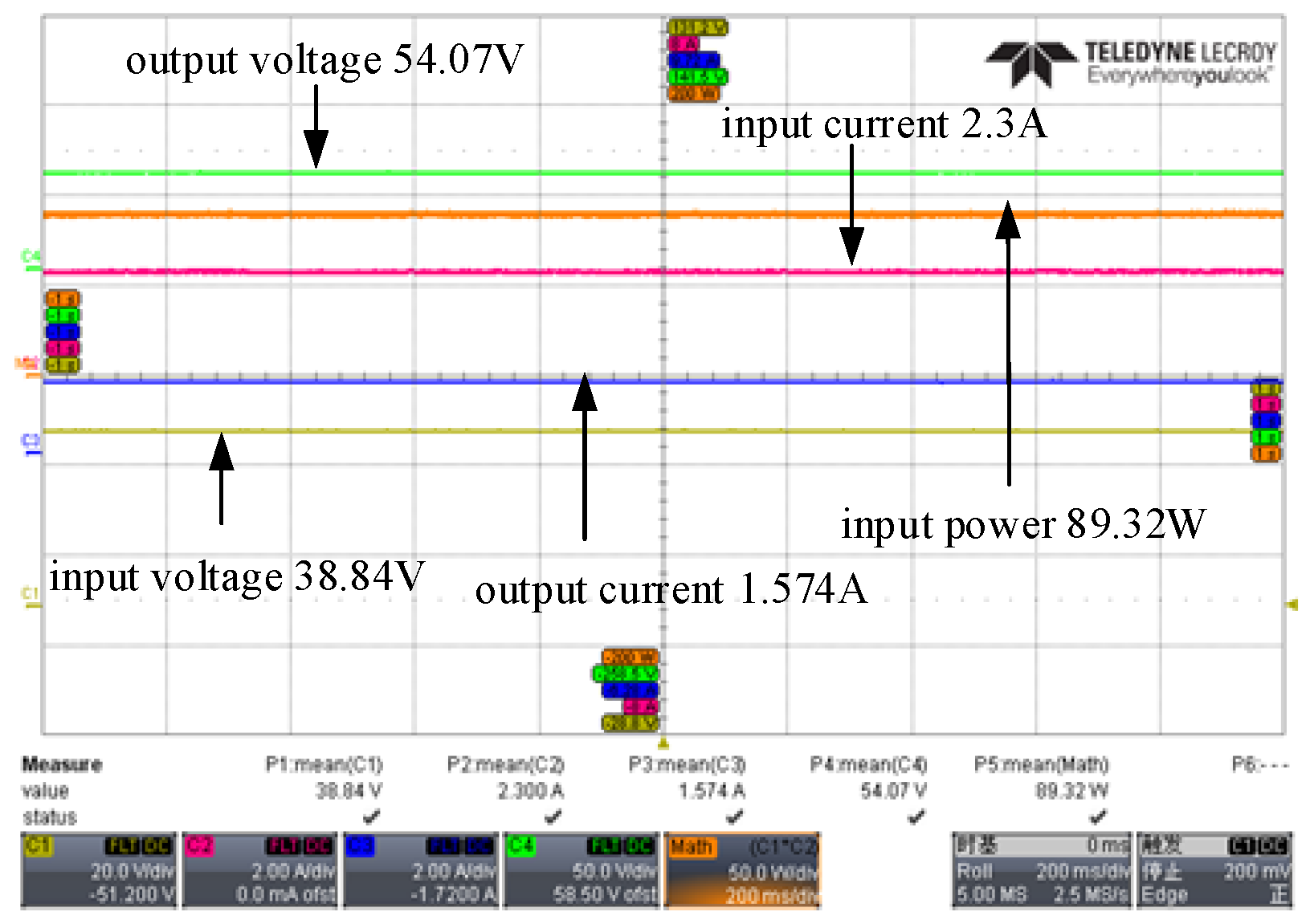
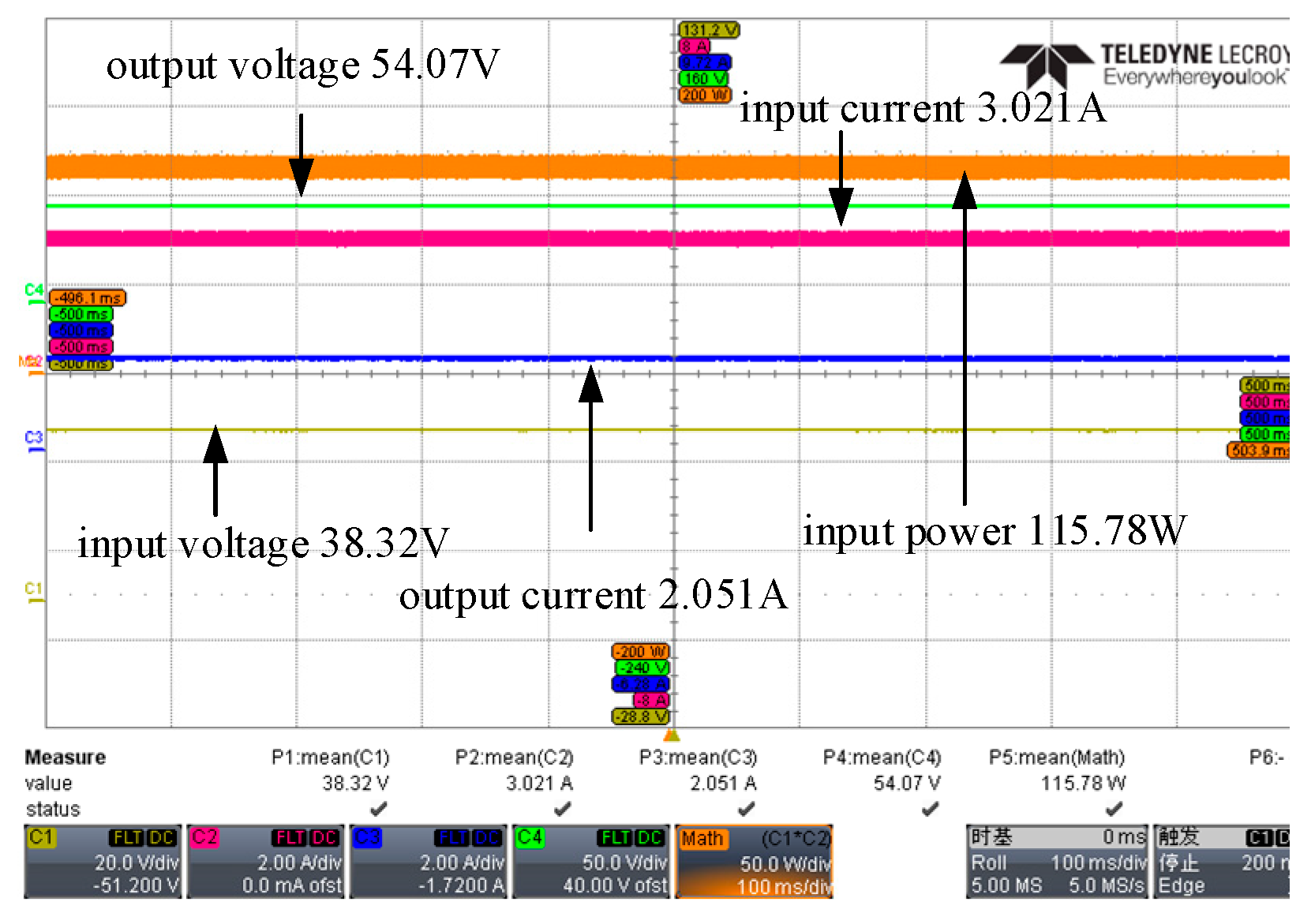
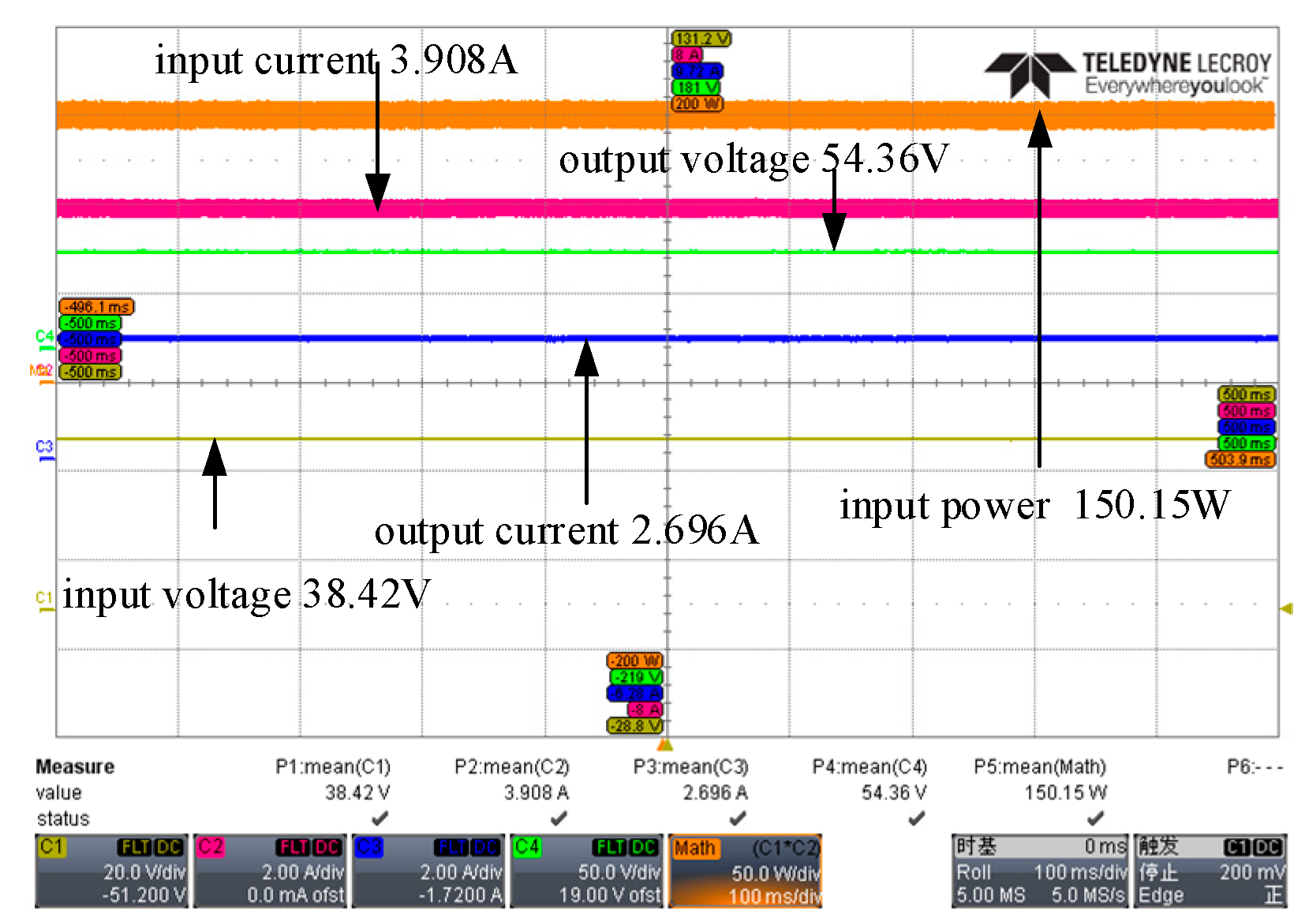

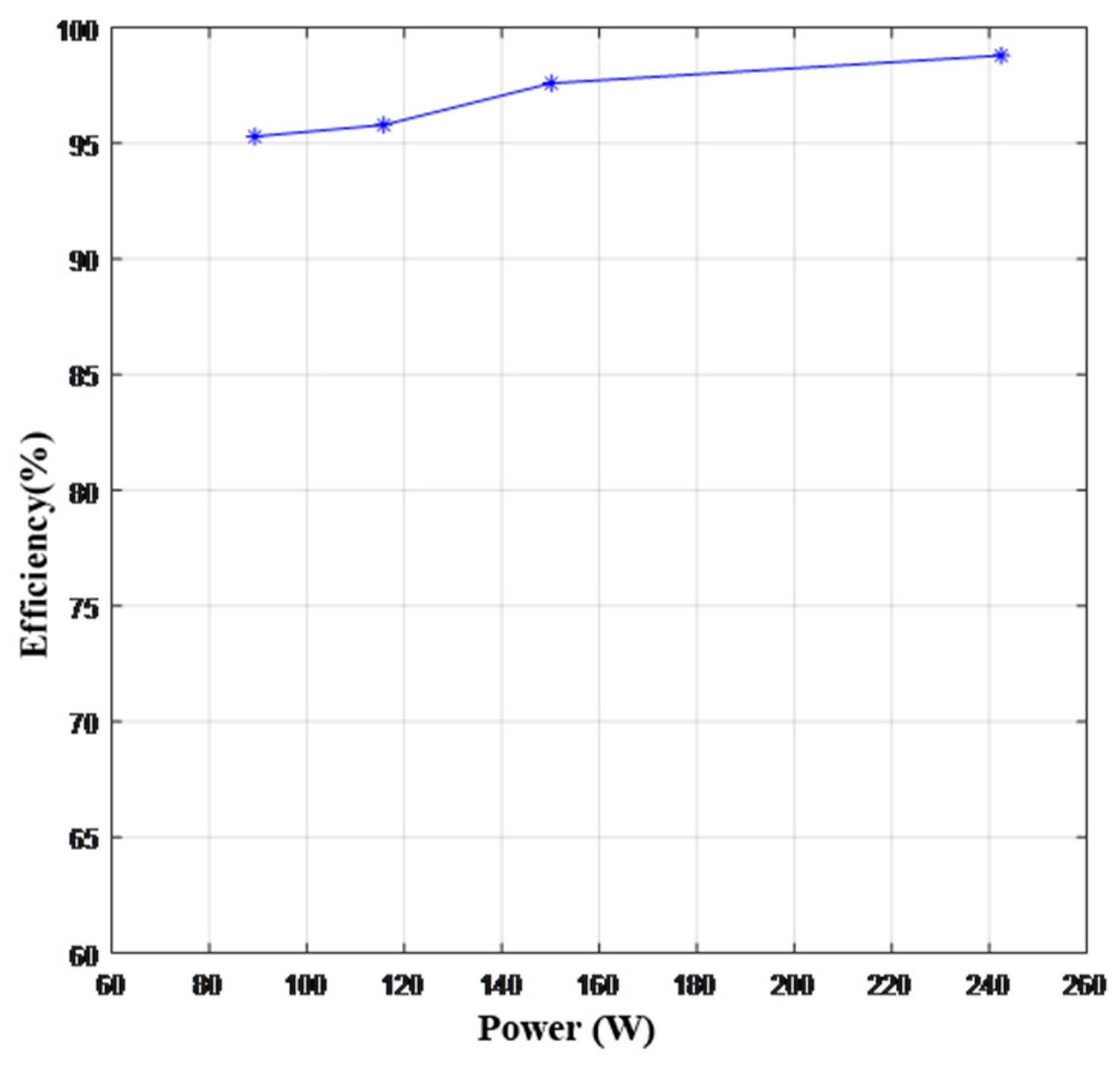

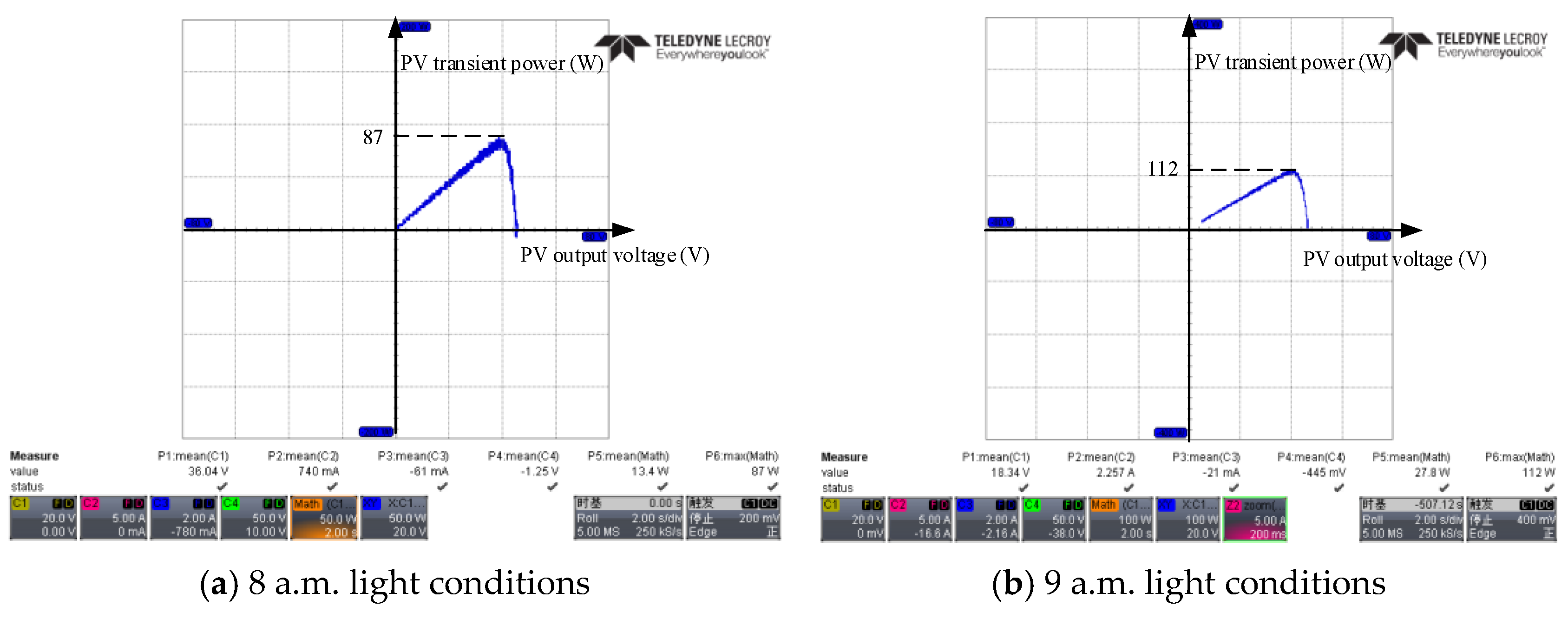
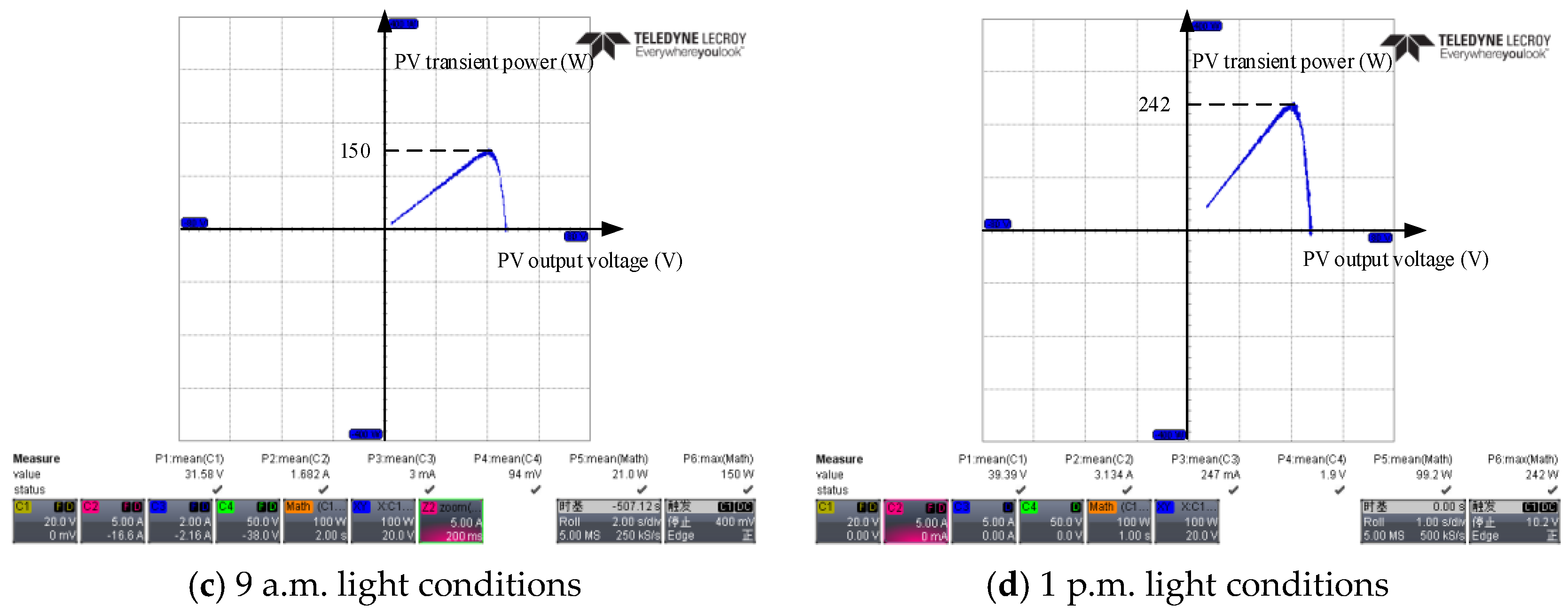
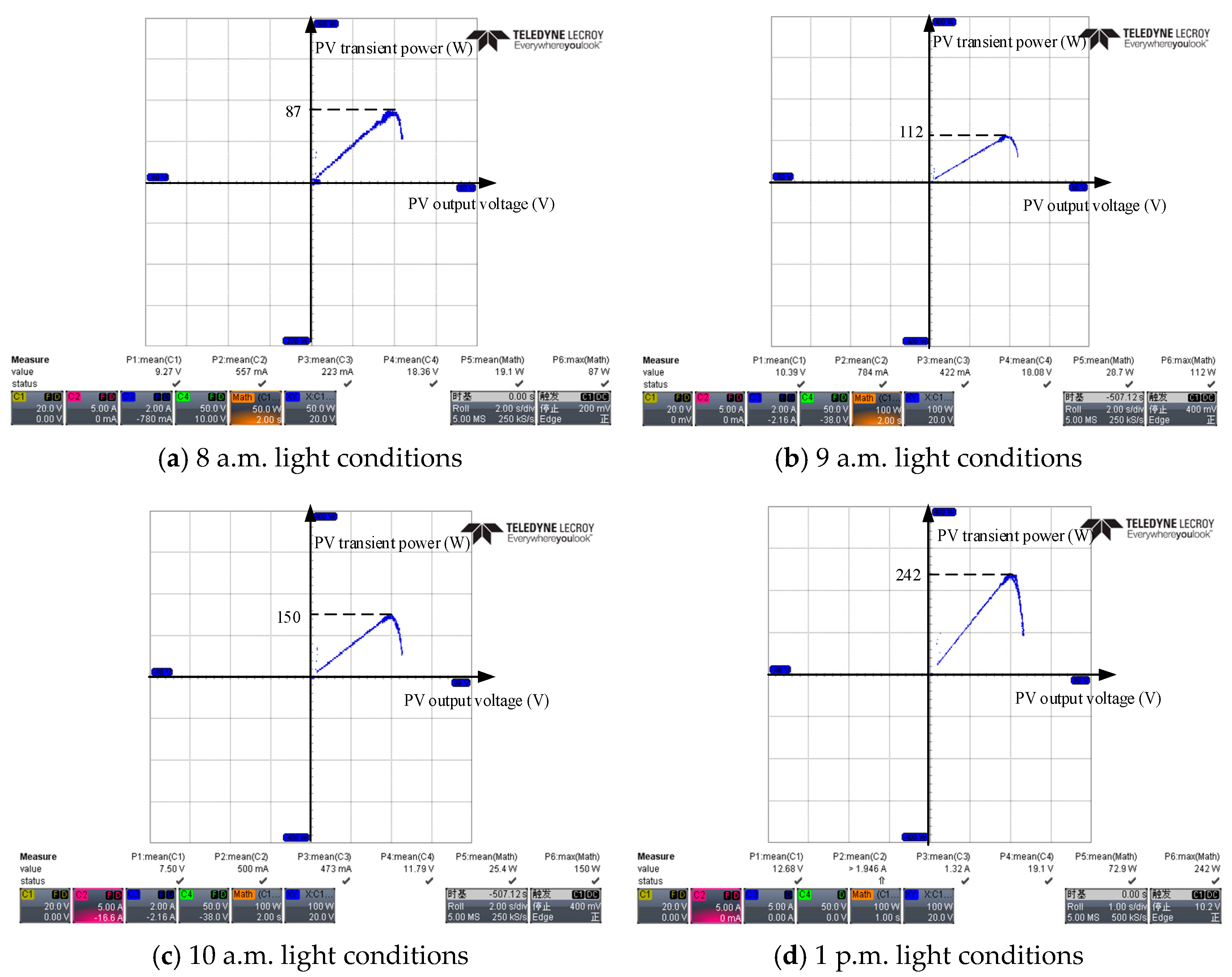
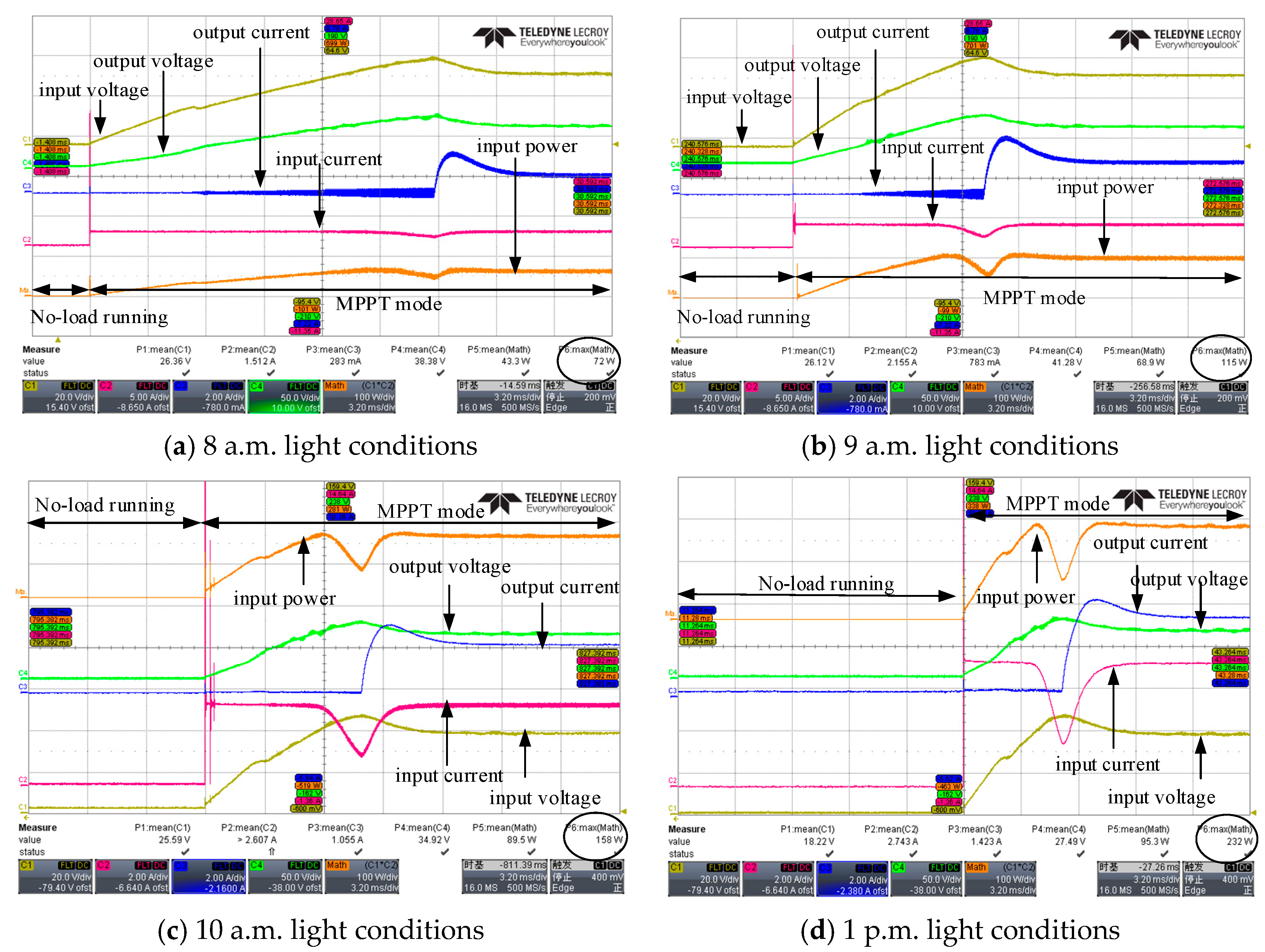
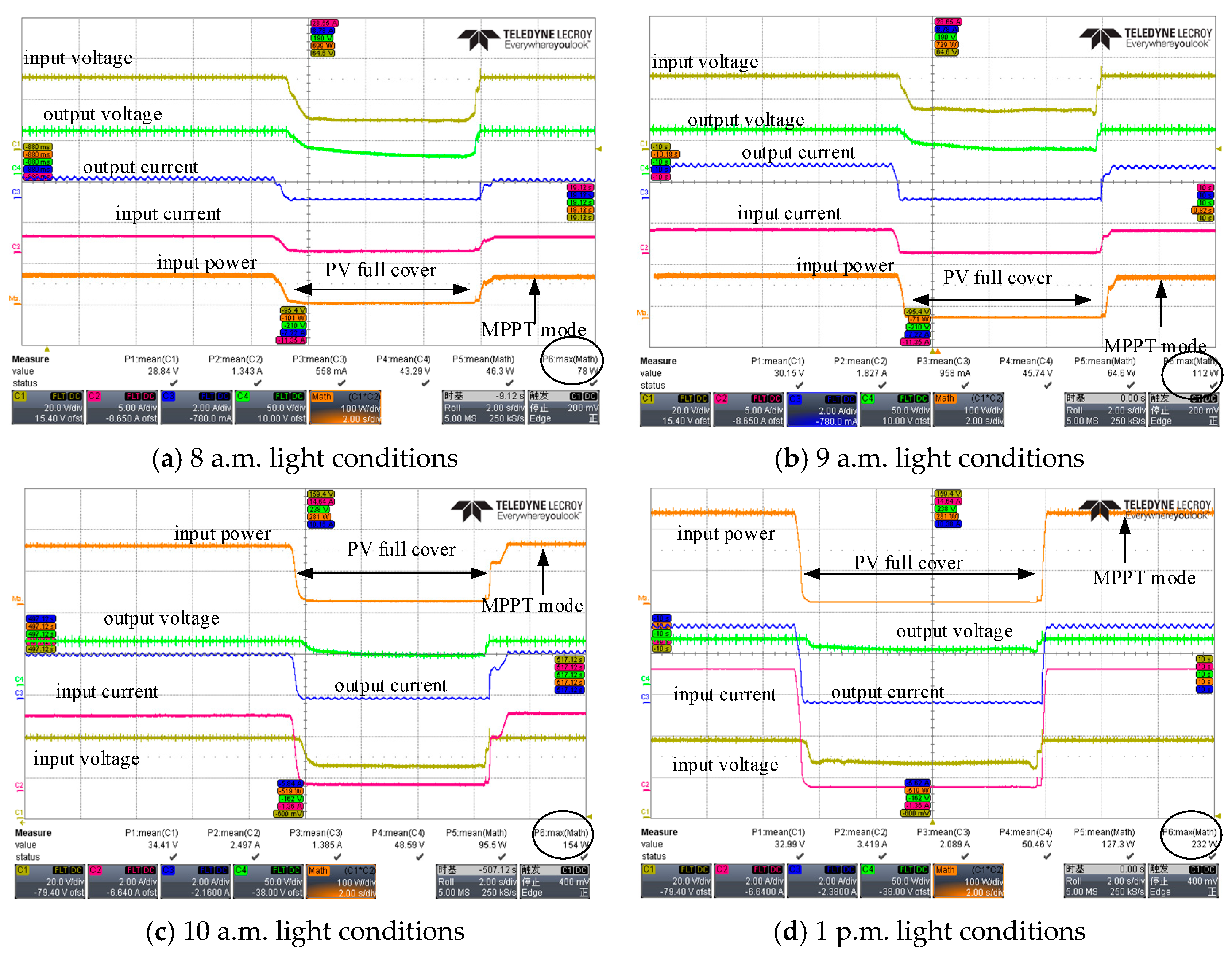
| Quadrant | ΔV | I2 | p |
|---|---|---|---|
| 1 | >0 | >0 | absorb |
| 2 | <0 | >0 | emit |
| 3 | <0 | <0 | emit |
| 4 | >0 | <0 | absorb |
| Title | Value |
|---|---|
| Input inductance L1 (µH) | 180 |
| Output inductance L1 (µH) | 37 |
| Input capacitance C1 (µF) | 2.2 |
| Input capacitance C2 (µF) | 60 |
| Ratio of the transformer | 2:1 |
| Output capacitance C4 (µF) | 470 |
| Original side inductance L7 (µH) | 400 |
| Secondary side inductance L8 (µH) | 100 |
| System Parameter | Value |
|---|---|
| Input terminal voltage (V) | 0~50 |
| Output open-circuit voltage (V) | 54.6 |
| Switching frequency (kHz) | 50 |
| Input and output capacitors (µF) | 470 |
| Input inductance (µH) | 180 |
| Output inductance (µH) | 37 |
Disclaimer/Publisher’s Note: The statements, opinions and data contained in all publications are solely those of the individual author(s) and contributor(s) and not of MDPI and/or the editor(s). MDPI and/or the editor(s) disclaim responsibility for any injury to people or property resulting from any ideas, methods, instructions or products referred to in the content. |
© 2023 by the authors. Licensee MDPI, Basel, Switzerland. This article is an open access article distributed under the terms and conditions of the Creative Commons Attribution (CC BY) license (https://creativecommons.org/licenses/by/4.0/).
Share and Cite
He, X.; Hashimoto, S.; Jiang, W.; Liu, J.; Kawaguchi, T. Design and Implementation of a Low-Voltage Photovoltaic System Integrated with Battery Energy Storage. Energies 2023, 16, 3057. https://doi.org/10.3390/en16073057
He X, Hashimoto S, Jiang W, Liu J, Kawaguchi T. Design and Implementation of a Low-Voltage Photovoltaic System Integrated with Battery Energy Storage. Energies. 2023; 16(7):3057. https://doi.org/10.3390/en16073057
Chicago/Turabian StyleHe, Xiao, Seiji Hashimoto, Wei Jiang, Jicheng Liu, and Takahiro Kawaguchi. 2023. "Design and Implementation of a Low-Voltage Photovoltaic System Integrated with Battery Energy Storage" Energies 16, no. 7: 3057. https://doi.org/10.3390/en16073057
APA StyleHe, X., Hashimoto, S., Jiang, W., Liu, J., & Kawaguchi, T. (2023). Design and Implementation of a Low-Voltage Photovoltaic System Integrated with Battery Energy Storage. Energies, 16(7), 3057. https://doi.org/10.3390/en16073057






